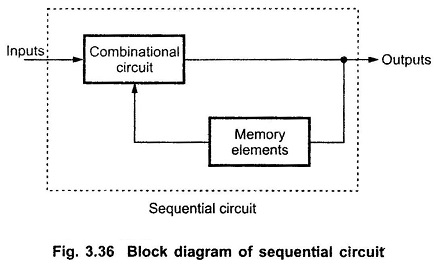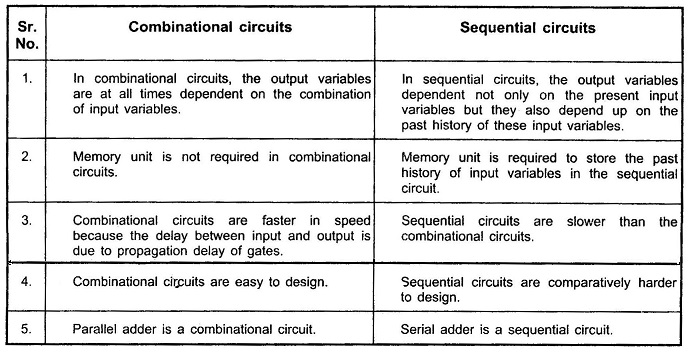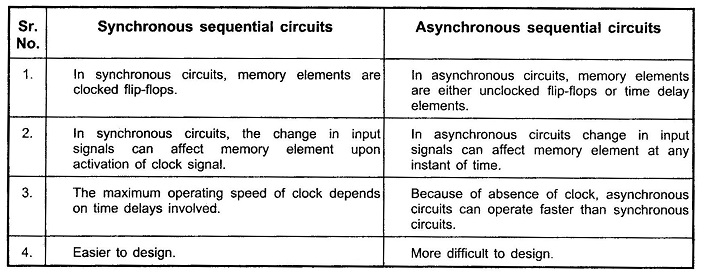Sequential Circuits:
There are many applications in which digital outputs are required to be generated in accordance with the sequence in which the input signals are received. This requirement cannot be satisfied using a combinational logic system. These applications require outputs to be generated that are not only dependent on the present input conditions but they also depend upon the past history of these inputs. The past history is provided by feedback from the output back to the input. Fig. 3.36 shows the block diagram of sequential circuits.
As shown in the Fig. 3 36, memory elements are connected to the combinational circuit as a feedback path.
The information stored in the memory elements at any given time defines the present state of the sequential circuit. The present state and the external inputs determine the outputs and the next state of the sequential circuit. Thus we can specify the sequential circuit by a time sequence of external inputs, internal states (present states and next states), and outputs.
Types of Sequential Circuit:
The sequential circuit can be classified depending on the timing of their signals :
- Synchronous sequential circuit and
- Asynchronous sequential circuit.
Difference between Synchronous and Asynchronous Sequential Circuits:
In synchronous sequential circuits, signals can affect the memory elements only at discrete instants of time. In asynchronous sequential circuits change in input signals can affect memory element at any instant of time. The memory elements used in both circuits are flip-flops which are capable of storing 1-bit binary information.



